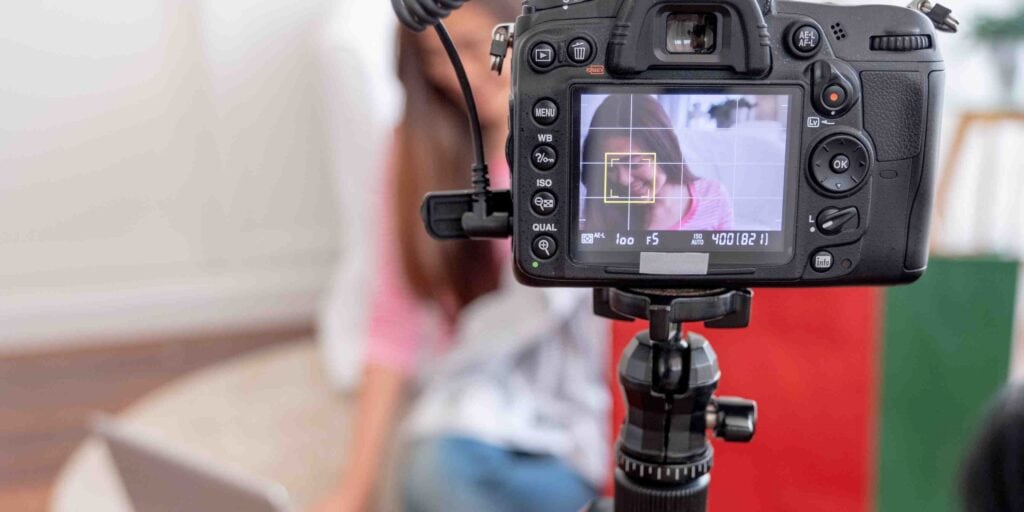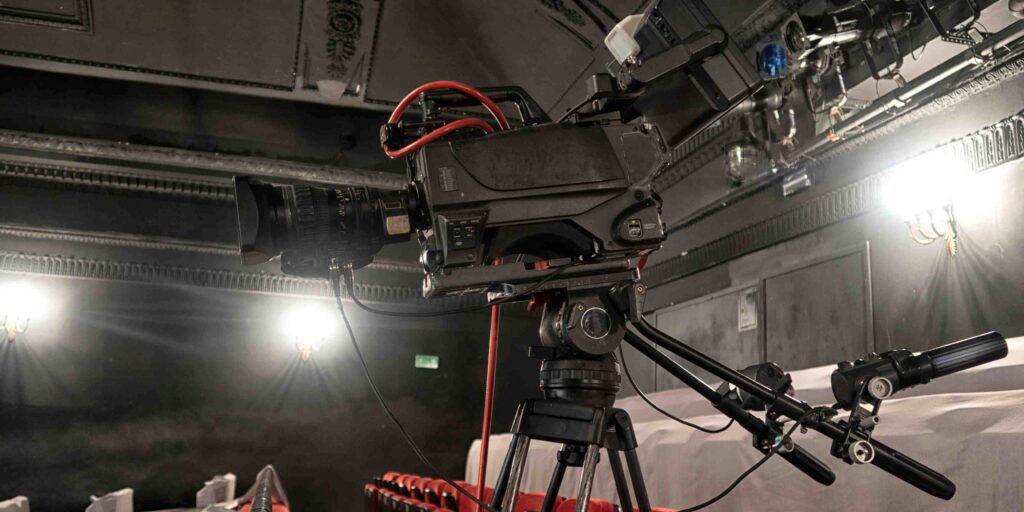Live streaming is a form of media broadcasting that allows for real-time events to be viewed by audiences over the internet. It involves sending video, audio, and other data over an IP network. This type of technology enables organisations to host virtual meetings and conferences with attendees from different parts of the world in a single online space. With live streaming, viewers can access content immediately upon broadcast, as opposed to waiting for a pre-recorded event or programme to hit TV screens or websites. This creates greater opportunities for companies wanting to engage their target audience in real time.
How does it work?
At its most basic level, live streaming requires three components: encode software, distribution networks (CDNs), and playback systems (websites like YouTube or Facebook). The encoding software converts video and audio into digital signals via encoders such as OBS Studio and sends these signals out through CDNs such as Twitch, which then deliver them back across various websites and platforms where users can view them on demand from anywhere in the world at any time with an internet connection.
Advantages of Live Streaming for Businesses

Live streaming has become increasingly popular among businesses due to its cost effectiveness and scalability when compared against traditional broadcasting services. With live streaming, businesses are able to broadcast content to a much wider audience across multiple devices such as computers, tablets and smartphones. It is also far simpler and more cost-effective to set up compared with traditional broadcasting equipment. Additionally, organisations can use livestreaming for internal communication purposes, such as staff meetings or training sessions, without incurring extra expenses for travel or accommodation.
Considerations Before Hiring a Live Streaming Service Provider
When evaluating different live streaming service providers, it’s important to consider several key factors, including the quality of the stream, the pricing structure, and the customer service support offered by the provider. Furthermore, organisations should look into what type of hardware or software is required in order to setup an efficient livestreaming platform, as well as if any additional features (e.g., chat rooms) are available upon request by the provider. Finally, make sure you inquire about their track record with other clients; this will give you a better understanding of the company’s credibility and reliability when it comes time to produce your event successfully online.
Setting up Your Own Live Stream Studio from Home

For those who want greater control over their livestreaming experience but don’t want to spend money on professional companies just yet, setting up your own studio from home could be an option. To create your own setup, you’ll need cameras, microphones, and audio recording equipment, as well as a proper lighting setup if you are filming indoors. Additionally, it is crucial to have access to robust internet connections in order to ensure high-quality streaming without any buffering or video freeze frames, which can be very frustrating for viewers. To enhance the production value of your livestream further, investing in green screens and backgrounds could also be beneficial, although this might require some degree of experience with video editing software such as Final Cut Pro or Adobe Premiere Pro in order to get good results.
Leveraging technology to enhance your virtual productions
By incorporating live streaming technology into virtual production events, organisations are able to reach larger audiences while ensuring they maintain quality control over their broadcasts by using encoders that can stream in HD or 4K resolution at ultra-low latency levels (0–1 second delay time). Furthermore, 3D virtual studio set production services allow businesses to take advantage of professional-grade sets that can instantly transport viewers from one location to another. This is achieved via chroma key technology, which allows for footage shot inside a green screen environment (otherwise known asbluescreening) to be digitally replaced with virtually any kind of backdrop found within the same space, allowing for more engaging content to be produced on the fly.
Steps to Take When Preparing for a Virtual Production Event
When preparing for a virtual production event, it’s important to first identify which technology platforms you will be using and ensure that they are properly tested in advance of the broadcast. Secondly, a proper lighting setup is essential, as poor quality footage can have an adverse effect on viewership numbers. Additionally, audio should also be taken into consideration, as this can make or break any livestreaming event; thus, using professional-grade microphones with noise-cancelling features is highly recommended. Finally, make sure your chosen camera angles give viewers the best possible experience by avoiding shaky hands or blocking views of certain objects or characters during filming whenever possible.
Tips and Tricks for Maintaining Quality During an Online Broadcast
To maintain high-quality broadcasts online, businesses should use HD webcams or cameras with low latency levels (under 1 second) that automatically adjust their frame rates in order to ensure smooth streaming across all viewing devices and platforms. Furthermore, it’s beneficial to utilise services such as private cloud servers so that streamers don’t overload public networks when there are multiple viewers accessing content at once. This could cause buffering issues, which would negatively affect the overall viewing experience for audiences. Lastly, it’s important to keep track of viewership numbers, as this can help optimise future broadcasts in order to maximise engagement levels.
What is 3D Virtual Studio Set Production?
3D virtual studio set production is a process whereby companies can create realistic and engaging television-style sets virtually with the assistance of professional services. This includes working with experienced graphic designers, animators, and visual artists who are capable of producing high-quality 3D models that can then be used during virtual production events such as livestream or pre-recorded videos.
The Benefits of Working with Professional 3D Virtual Studio Set Production Companies
Working with professional 3D virtual studio set production companies allows businesses to produce more visually stunning stream that stand out from the competition. Experienced professionals have an eye for detail, which allows them to create more customised designs tailored towards specific content types, thus helping to engage audiences further than before. Additionally, these types of services also provide organisations the ability to scale up when needed without compromising on quality, creating great opportunities for growth within any industry.
Overall, live streaming technology and 3D virtual studio set production services are changing the way businesses engage their target audience in real time. And by leveraging these two technologies together, organizations can create even more engaging experiences that viewers will remember. Live streaming professionals provide organizations with the resources and expertise to easily transition from traditional broadcasting into more modern digital formats. Furthermore, 3D virtual studio set production services are invaluable for creating visually stunning content that viewers simply can’t get enough of. Investing in the right live streaming provider and 3D virtual studio set production company is essential for achieving success, so make sure to do your research before deciding on any one provider or service.
FAQs:
Live streaming differs from webcasting in that it typically involves the transmission of video data over a dedicated internet connection such as those provided by cable and fibre providers. Because of this, videos streamed over these connections tend to be of higher quality than those transmitted via standard broadband networks. By comparison, webcasts are usually distributed on open networks without the need for dedicated connections, meaning they can often suffer from lower resolution or slower buffering speeds due to traffic congestion on shared networks. Livestream also offer superior interactivity options compared to pre-recorded webcasts, which makes them ideal for hosting applications like Q&A sessions while providing a level of immediacy not possible with pre-records.
In order to set up your own live streaming studio, you will need a minimum of four pieces of equipment:
· A video camera—either professional or consumer
· A microphone—for capturing audio.
· Software—for recording and streaming the videos from your computer;
· Lighting—to enhance visual quality as well as improve audience engagement.
You may also want to consider investing in additional equipment such as editing software, green screen technology, and an encoder device, depending on what type of content you wish to stream. If setting up a 3D virtual studio for production, other considerations include augmented reality technologies and tools like artificial intelligence (AI) and machine learning (ML).
The most important factor in ensuring that your virtual production event is successful is planning ahead and addressing any potential problems or issues beforehand through adequate testing, something with which professional live streaming service providers are very familiar when it comes to preparing events for launch day. Having a clear understanding of the objectives of the event can also help ensure that its goals are met on time without any last-minute surprises; this could be something simple like marketing campaigns leading up to the event or something more complex, such as quality control testing.
Yes, there are several different software applications and tools you should consider using when producing a virtual production. One of the most popular options is Adobe Creative Cloud, which provides users with access to a comprehensive range of professional-level audio and video editing, effects, and animation tools. Other similar packages include Apple’s Final Cut Pro X and Avid Pro Tools for advanced music production functions. For 3D virtual studios, Autodesk Maya and 3ds Max both offer powerful modelling capabilities, while Unity is perhaps the most widely used game engine for real-time interactive content creation.
Ensuring high-quality audio and video during an online broadcast requires accurate calibration between all devices in your studio setup this includes everything from microphones to cameras through to monitors in order for them all to function harmoniously together with minimal latency issues occurring during playback across multiple platforms. Professional live streaming service providers will have experience dealing with these types of technicalities, though if budget allows, it may also be worth investing in additional equipment like separate microphone preamps, digital mixing consoles, or DACs to ensure full control over your audio signal.
Yes, 3D virtual studio set production can help create a more immersive experience for viewers by allowing users to interact with their content in a way that would have once been impossible. This could be something as simple as incorporating augmented reality elements into your broadcast or providing an interactive space for the audience to explore; this is something that many professional live streaming service providers are able to offer customers.
Professional companies specialising in 3D virtual studio set production are able to provide a range of services including design and development of the environment, motion graphics creation, integration of real-time data stream such as stock market information, game engine exports, and much more all while handling any technical requirements like lighting and compositing with ease. Other services may include live streaming support throughout the event as well as post-production editing so you can continue building upon your brand without limitation.
Generally speaking, there will be additional costs associated with hiring a professional live streaming service provider, as they often employ larger teams of specialists to provide everything from technical support and development through to customer service. However, these typically come at a premium over the cost of hosting your own event due to the level of expertise and experience gained from working on various different projects.
Yes, there are several best practises that can help ensure live streaming applications run smoothly across all devices, browsers, and networks. One of the most important is setting up adequate network bandwidth prior to any broadcast, as insufficient data speed could result in poor quality video playback or even dropped connections during key moments; this is something many professional companies specialise in helping you identify ahead of time so your viewers remain engaged throughout the entire event. Additionally, establishing a reliable connection between computers and other components within the studio before going live will also help reduce latency issues caused by power fluctuations or hardware malfunctions occurring mid-stream. Finally, ensuring that all software applications have been updated to their latest versions, particularly when streaming 3D content should eliminate any unforeseen bugs from appearing during broadcasts, which could adversely affect performance levels on some devices and platforms.

